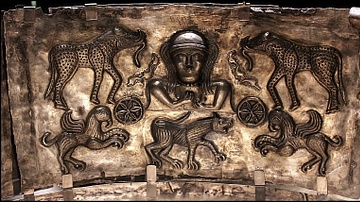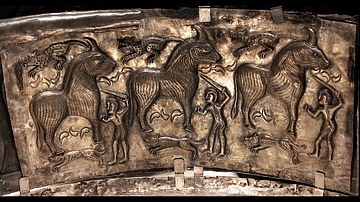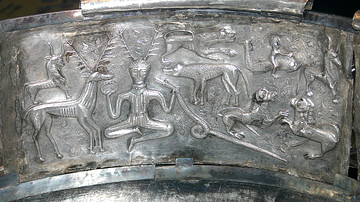Illustration
The Gundestrup Cauldron was discovered in a bog in Jutland, Denmark. However, the cauldron includes elements and iconography which derive from Celtic, Thracian, and Asian cultures. The piece is the subject of various interpretations and was probably made in sometime between 200 BCE and 300 CE.
The cauldron is made of 13 hammered plates, and portrays giant deities alongside smaller humans, animals, and mythical beasts. The scenes include a procession of warriors, and a horned god holding a broken wheel. From the Bern Historical Museum in Switzerland.
Cite This Work
APA Style
Che, X. (2019, June 17). Gundestrup Cauldron. World History Encyclopedia. Retrieved from https://www.worldhistory.org/image/10935/gundestrup-cauldron/
Chicago Style
Che, Xuan. "Gundestrup Cauldron." World History Encyclopedia. Last modified June 17, 2019. https://www.worldhistory.org/image/10935/gundestrup-cauldron/.
MLA Style
Che, Xuan. "Gundestrup Cauldron." World History Encyclopedia. World History Encyclopedia, 17 Jun 2019, https://www.worldhistory.org/image/10935/gundestrup-cauldron/. Web. 16 Apr 2025.







